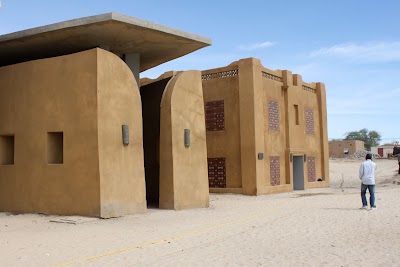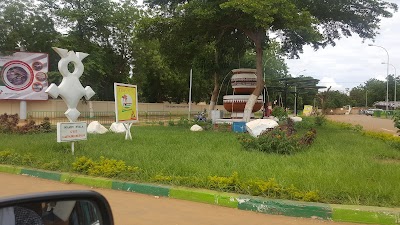Ancient Tombs of Timbuktu (قبور تيمبكتو القديمة)
Overview
Nestled in the remote and historic sands of the **Taoudénit Region** lies one of Mali's most enigmatic treasures: the **Ancient Tombs of Timbuktu**. These centuries-old burial sites offer a captivating glimpse into the past, chronicling the profound history and cultural significance of one of Africa’s iconic cities.
Timbuktu, often celebrated as the **"City of 333 Saints,"** was once a vibrant epicenter of Islamic scholarship, trade, and cultural exchange during the medieval period. It attracted scholars, traders, and pilgrims from across the Islamic world, becoming a melting pot of ideas and diversity. The ancient tombs scattered throughout this historic city stand as a testament to Timbuktu's golden era, reflecting its rich spiritual and scholarly heritage.
Many of the tombs date back to the 14th to 16th centuries and serve as the resting places of revered Islamic scholars and saints. These influential figures played vital roles in the intellectual and spiritual life of Timbuktu. The architecture of the tombs showcases a fascinating blend of **Saharan, Maghreb,** and **Sudanic** influences, featuring intricate designs and exceptional craftsmanship. Today, these sites are essential to the cultural landscape, attracting visitors eager to connect with the past.
Among the most famous tombs is that of **Sidi Yahya**, an esteemed scholar whose legacy as a teacher and spiritual leader continues to resonate. The mausoleum of Sidi Yahya, alongside other notable sites like the tombs of **Al-Aqib** and **Alpha Moya**, serves as a major pilgrimage destination, often imbued with a serene and reflective atmosphere. These revered sites remain sacred to local Malians who visit to pay their respects, seek blessings, and reflect on the lives of these historical luminaries.
The significance of the ancient tombs extends beyond their immediate religious and academic contexts. They symbolize the broader historical intersection of **trade, culture,** and **knowledge** that flourished along the Trans-Saharan trade routes. Timbuktu was a vital nexus where caravans laden with salt, gold, ivory, and manuscripts converged, fostering an economic and cultural renaissance. The tombs stand as silent witnesses to this era, encapsulating stories of wealth, aspiration, and enlightenment.
In addition to their historical and cultural importance, the ancient tombs of Timbuktu have faced contemporary challenges, particularly from environmental factors and socio-political upheaval. Over the years, various international organizations have collaborated with local communities to preserve and safeguard these heritage sites, ensuring that these irreplaceable cultural landmarks remain protected for future generations. Despite these challenges, the resilience of these sites serves as a poignant testament to the enduring human spirit.
For tourists, visiting the ancient tombs offers a unique and profound experience. The journey to the **Taoudénit Region** is an adventure in itself, with the stark and beautiful Saharan landscape unfolding before your eyes. Local tour guides, often descendants of families who have preserved these sites for generations, provide invaluable insights and personal stories that enrich the visit. Guided tours offer context, explaining historical significance, architectural nuances, and ongoing conservation efforts.
Moreover, the cultural landscape surrounding the tombs includes more than just the mausoleums. Visitors can explore the legendary city of Timbuktu, with its ancient mosques such as **Djinguereber** and **Sankore**, which are marvels of medieval architecture and centers of Islamic learning. The local markets, brimming with crafts, manuscripts, and artifacts, present a hands-on opportunity to appreciate the rich local culture and heritage.
In conclusion, the **Ancient Tombs of Timbuktu** are not merely historical sites; they are living chronicles of an era when Timbuktu was a beacon of learning and culture in the Islamic world. They embody the spirit of a city that, despite its current challenges, continues to inspire awe and reverence. Visiting these tombs allows tourists not only to observe but also to connect with the past in a deeply meaningful way, making it an unforgettable journey into the annals of history.






